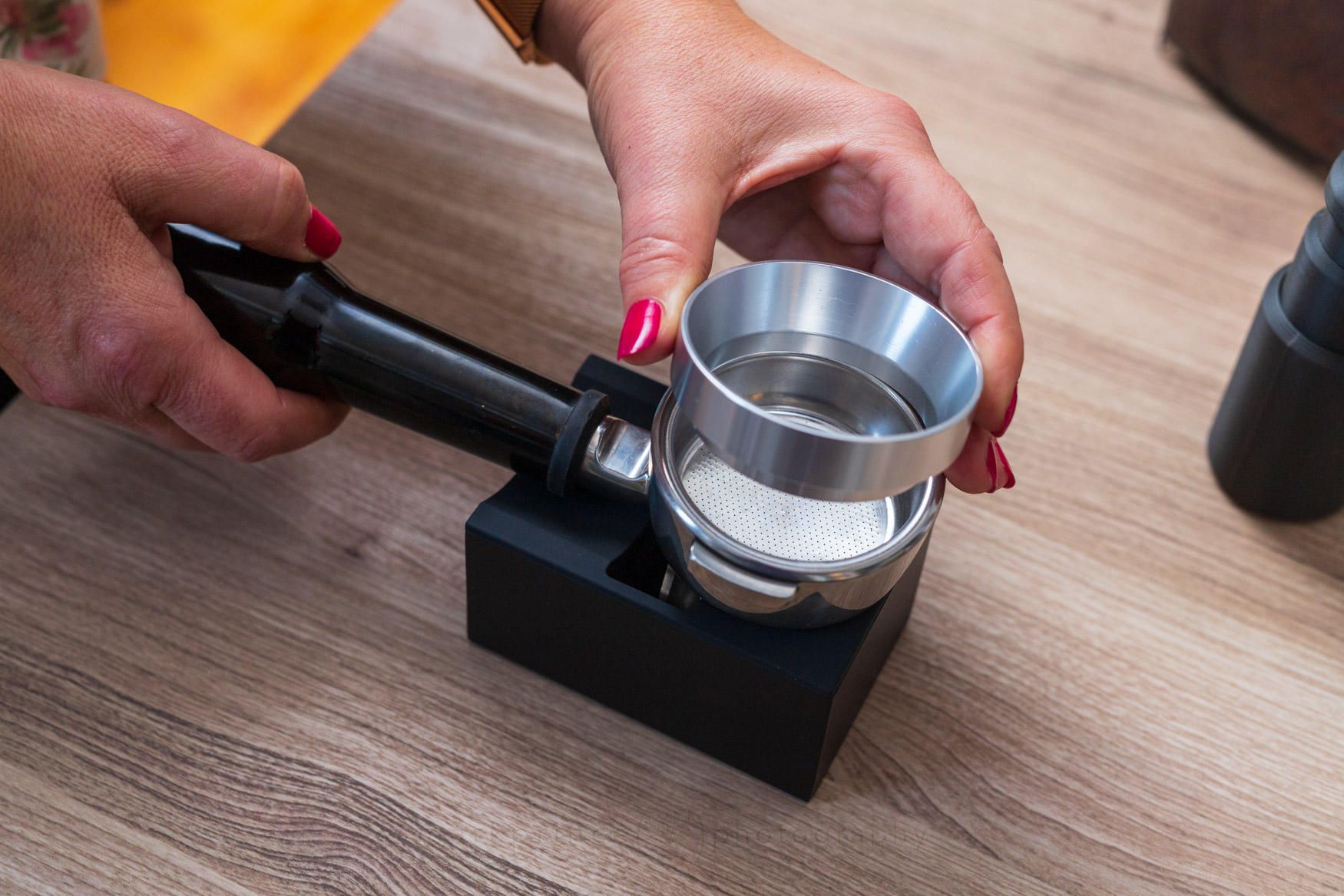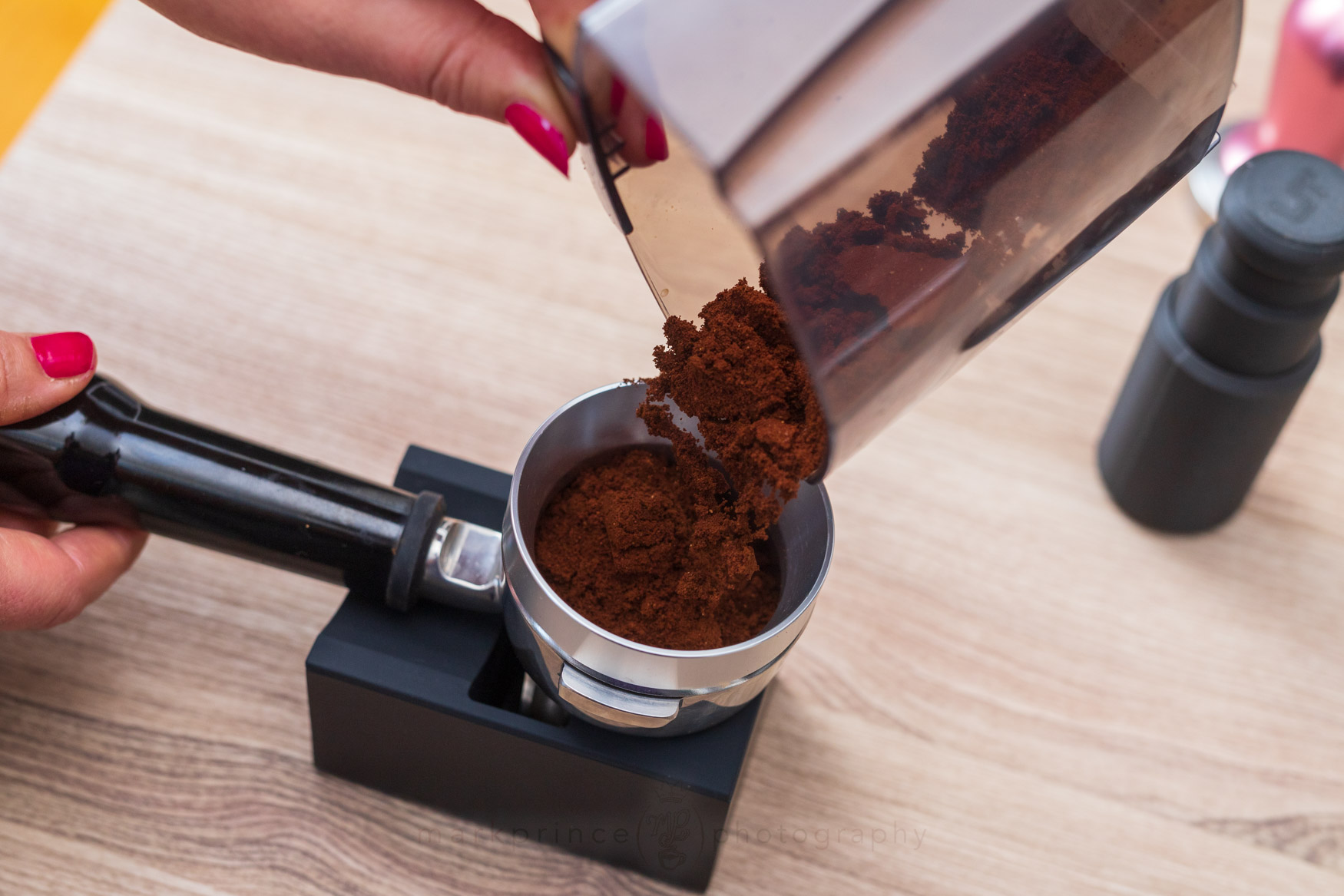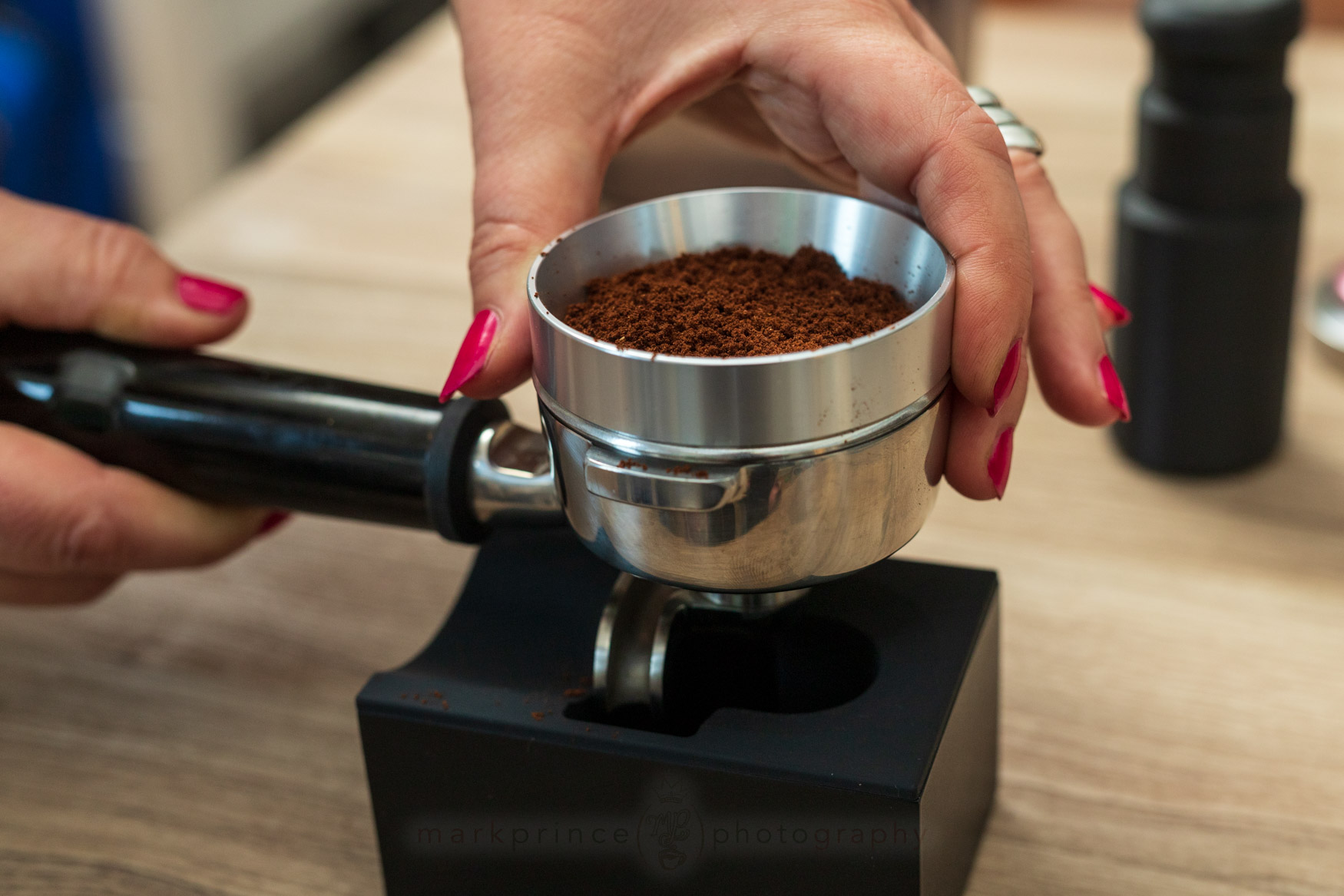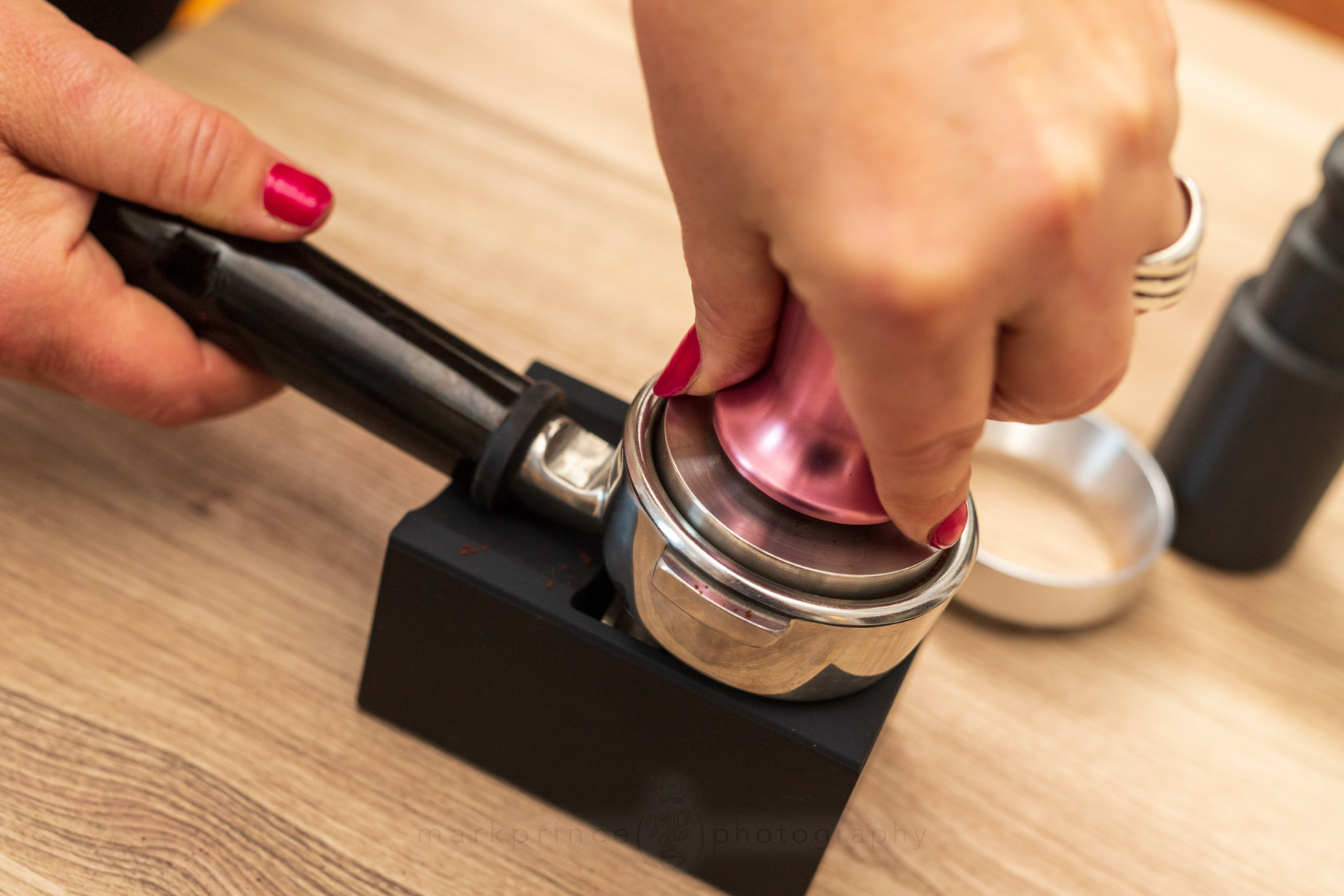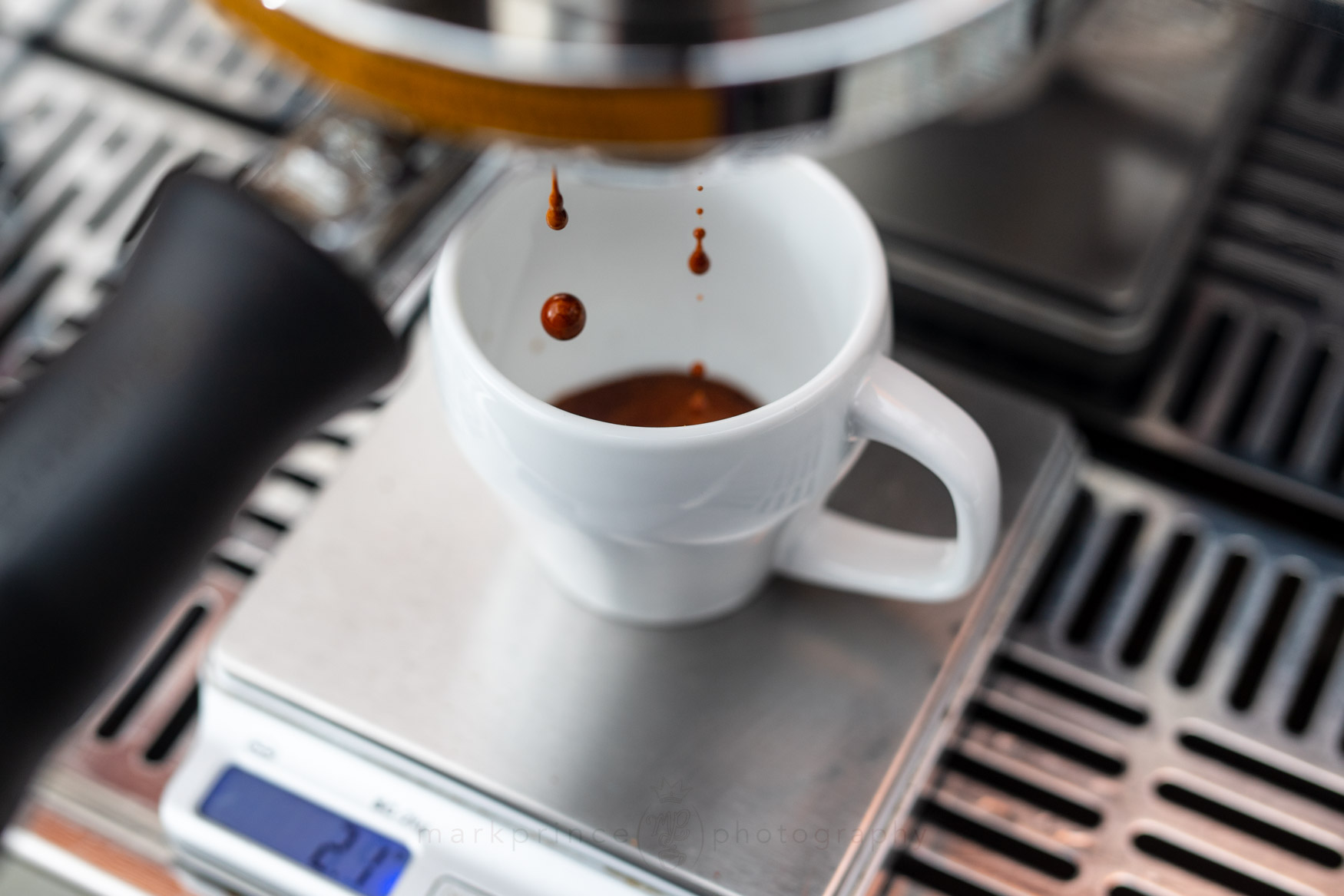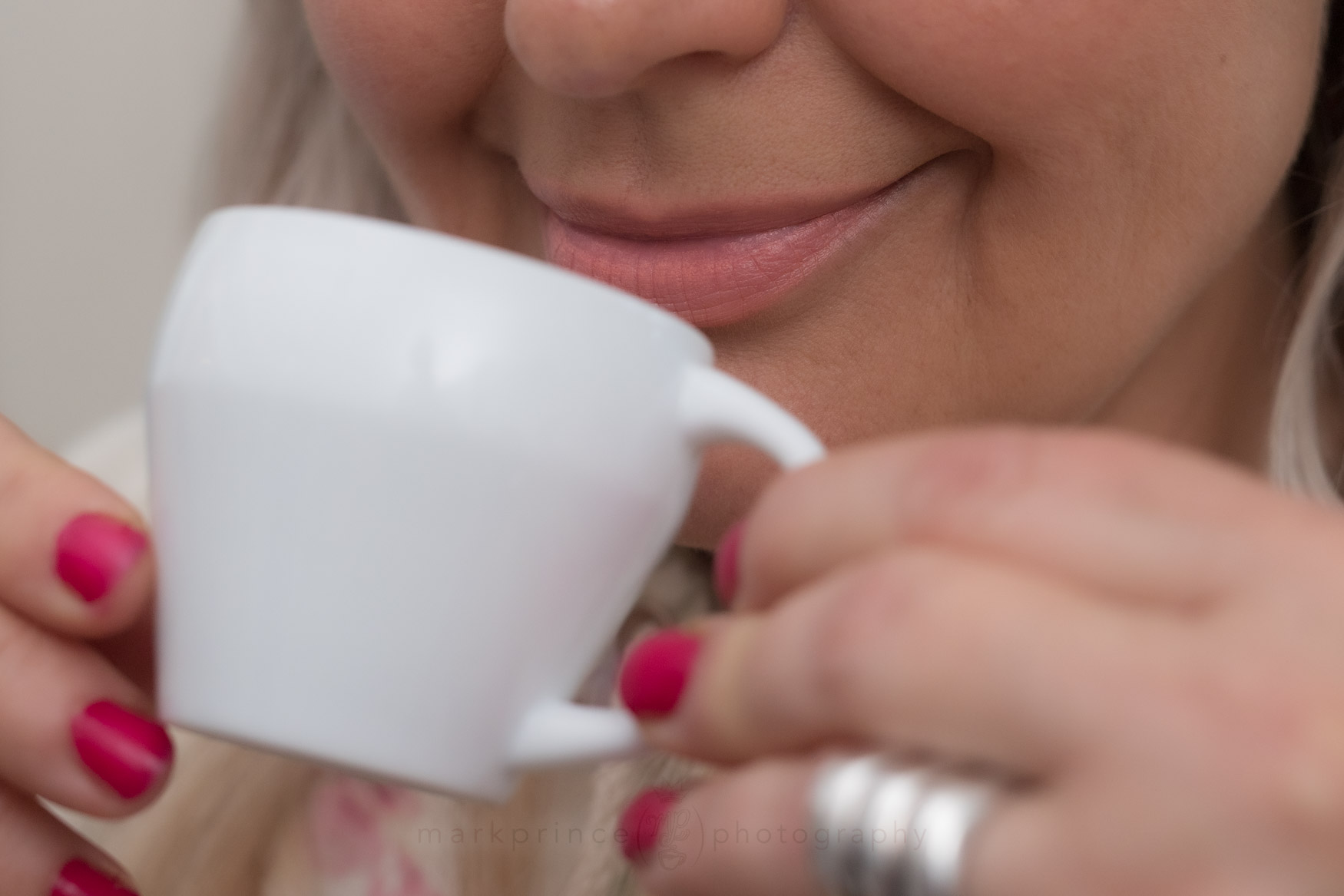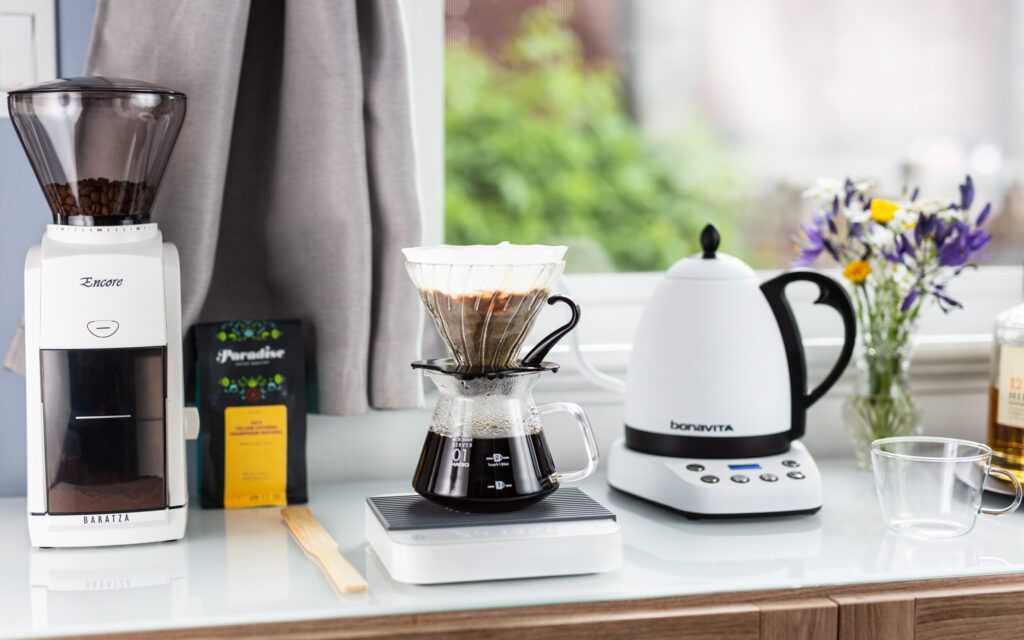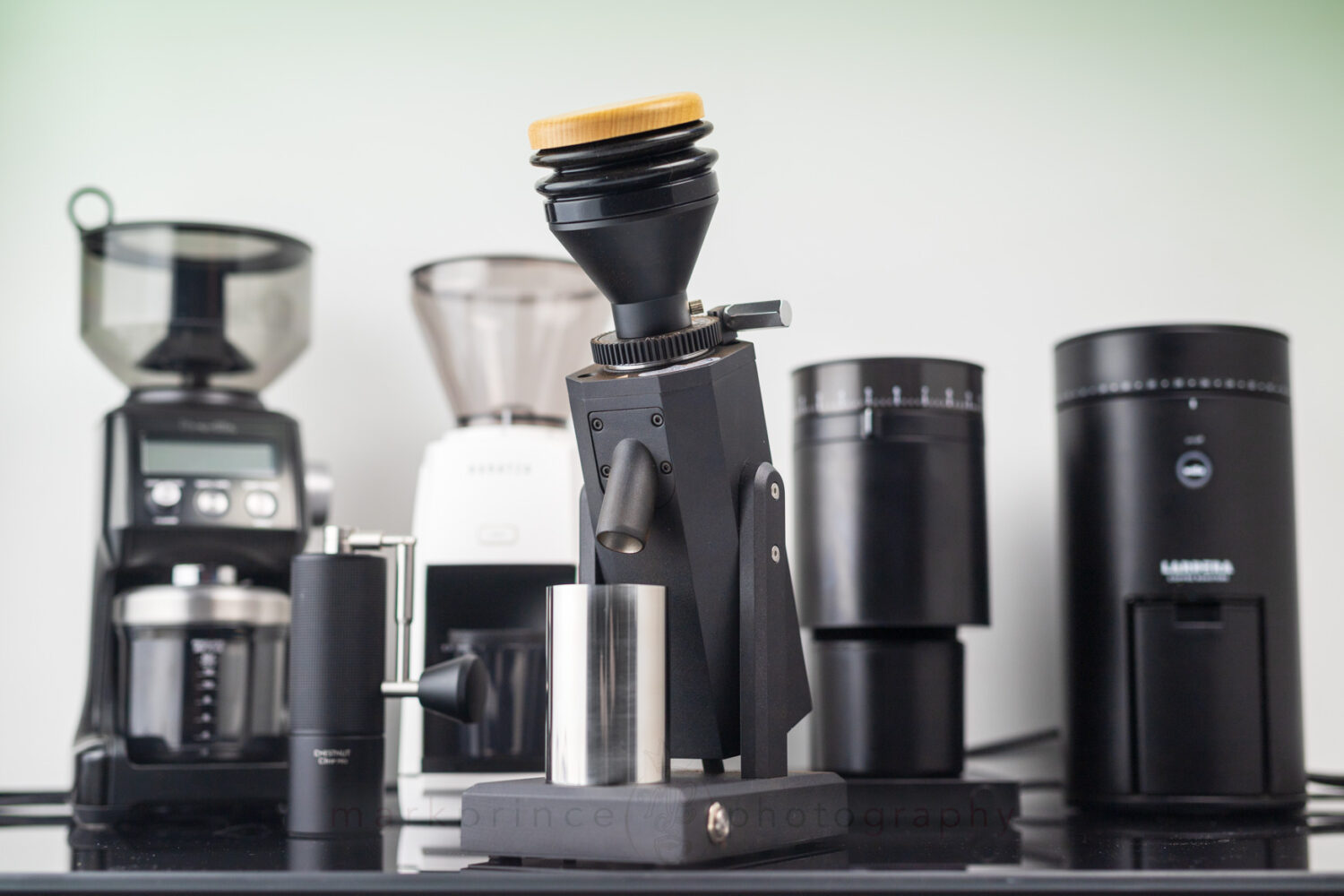How to do the Weiss Distribution Technique for Espresso
Whether you are a home barista, or a cafe barista looking to improve their shot quality, the WDT method can and will help. Once you get practiced with the technique, it can be relatively quick, adding only about 15-25 seconds to your shot pulling process. Here’s some steps and guidance.

Equipment Cost $ 35
Necessary Supplies
Necessary Tools
Weiss Distribution Technique Steps
Choose the Right Distribution Tool
While you can do the WDT with a toothpick, sewing needle or even a paperclip, having a proper tool for the method really makes it easier, better, and quicker to perform. Opt for a tool where the needles are more widely spaced than close together. I am using the excellent Classic WDT Tool from IntrovertMakes, and it does a wonderful job.
Use a Dosing Collar
A dosing collar of some sorts is absolutely required to do a fast, even and mess free WDT application. With a dosing collar, you can be more “aggressive” in the early stages of your WDT method, in order to better redistribute coffee and break up excessive clumps. Without one, applying WDT without making a mess can take 3x or more extra time. You can make one out of a solo yoghurt container (cut the bottom off), or buy a nice one like the one I’m using, from Amazon.
Grind and Dose
Grind your coffee to the right espresso grind setting immediately before you want to make your shot. Timing is of essence here, because the longer espresso grinds are exposed to air, the less CO2 they have to help you make great coffee. Since the WDT method adds time to your prep, grind your coffee after you have your other tools ready to go. Once ground, pour the coffee into your portafilter with the dosing collar attached.
Apply the WDT Distribution
After dosing the coffee grounds into the portafilter, use the distribution tool to gently stir the grounds. Move the tool around in a circular or back-and-forth motion, ensuring that all clumps are broken up, and the grounds are spread evenly. Ensure the needles are as close to the bottom of the filter basket without actually touching it. This comes with practice. Try to complete this in under 20 seconds.
Knock Down (Optional)
Once distributed with the WDT tool, your bed of coffee should be nicely fluffy and even across the filter basket. Some like to “knock down” the bed of coffee at this point by very evenly knocking the portafilter down onto a tamping mat, to compact and lower the bed in an even way. This is optional, but experiment both with and without to see what benefits you get in your shot.
Tamp as Usual
With your nicely distributed, fluffy (or knocked down) coffee grounds ready to go, proceed with tamping as you would in your regular espresso preparation routine. Applying consistent, level, and adequate pressure during tamping is essential to achieve the best results. If you use a leveler, use that first.
Pull the Espresso Shot
Insert the portafilter into your machine and pull that shot of espresso using your normal method.
Benefitsof the Weiss Distribution Technique
The number one benefit of doing the WDT method when preparing your espresso is, you’ll get better tasting espresso. I mean, isn’t that good enough? But wait, there are more specific benefits, too.
-
Enhanced Flavor Clarity:
By ensuring a consistent coffee bed, the WDT allows for a more even extraction of flavors from the coffee grounds. This results in improved clarity and definition of flavor notes, bringing out the full potential of the coffee beans.
-
Increased Consistency
The WDT minimizes the impact of human error in the espresso-making process. Baristas often face challenges in achieving consistency across multiple shots, but the WDT significantly mitigates these variations, leading to more predictable and repeatable results.
-
Reduction in Channeling
Channeling, which occurs when water finds paths of least resistance through the coffee bed during extraction, can result in uneven extraction and a subpar espresso shot. The WDT minimizes the risk of channeling by creating a uniform bed that allows water to pass through evenly.
-
Better Crema Formation
The even extraction brought about by the WDT leads to improved crema formation, the rich golden-brown layer that sits atop a well-pulled espresso shot. A thicker, more robust crema is often an indicator of a well-balanced and flavorful shot.
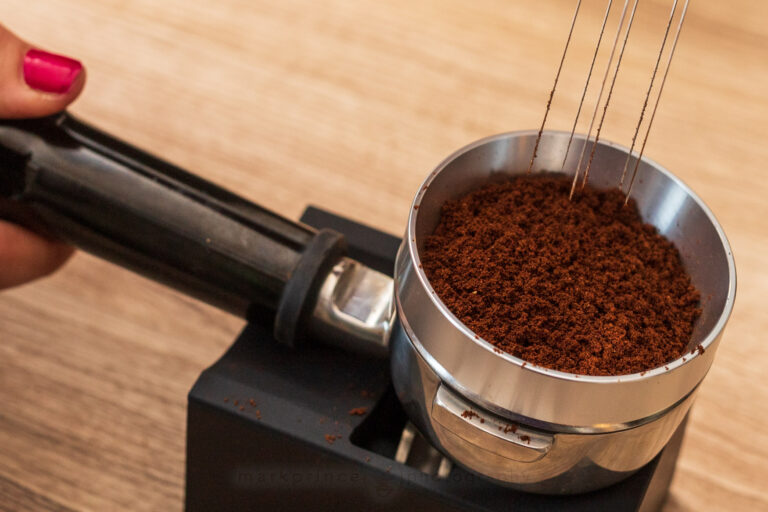
Quick and Easy
WDTConclusion
The Weiss Distribution Technique has become a game-changer in the pursuit of home espresso perfection. It does add up to 60 seconds to prep time, especially if you don’t have a dosing collar, and this is one reason why so many cafes have not adopted it, but I feel they should. A well practiced WDT technique should only add about 30 seconds (or less) to your shot prep time, and the results in the cup are definitely worth it.
By promoting even extraction and enhancing flavor clarity, this method empowers baristas and home enthusiasts alike to elevate their espresso-making skills. Implementing the WDT requires a bit of practice and experimentation, but the rewards are well worth the effort. If you haven’t tried WDT yet, give it a shot: all you need is an unfolded paperclip to try it out, as I did in my introduction post to this preparation method.
Happy brewing!

Support CoffeeGeek
If you enjoy and learn from this resource, please consider making a one time or recurring donation to help support our work and fund purchases for future reviews.







